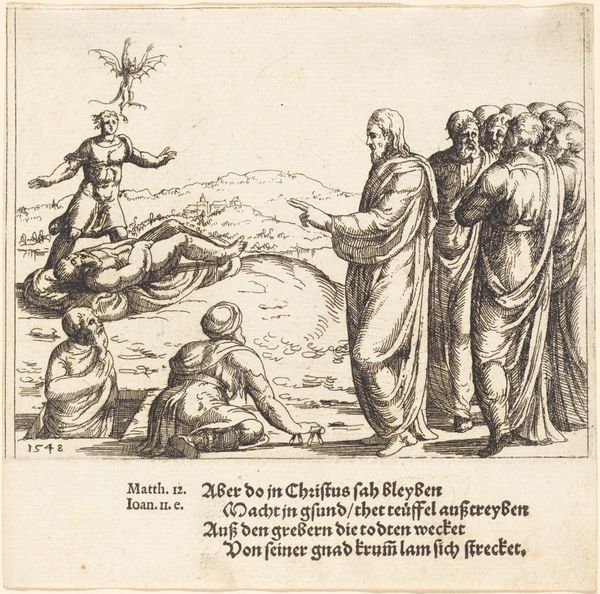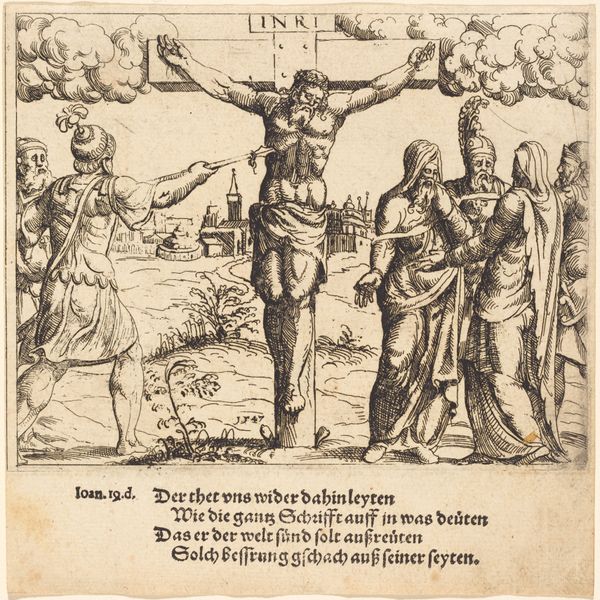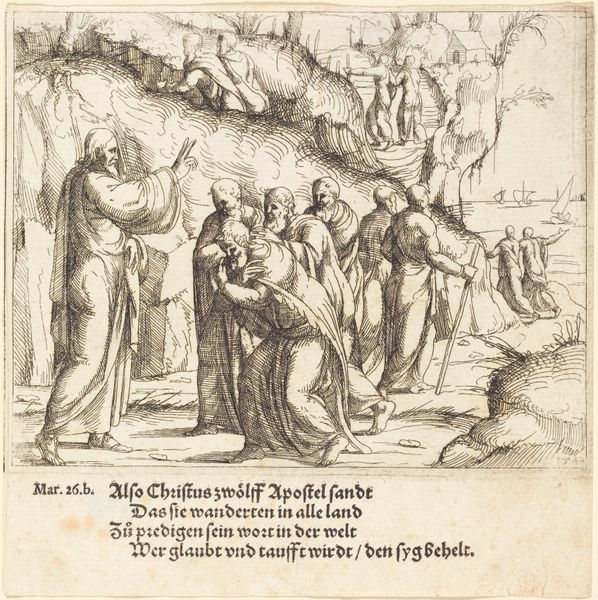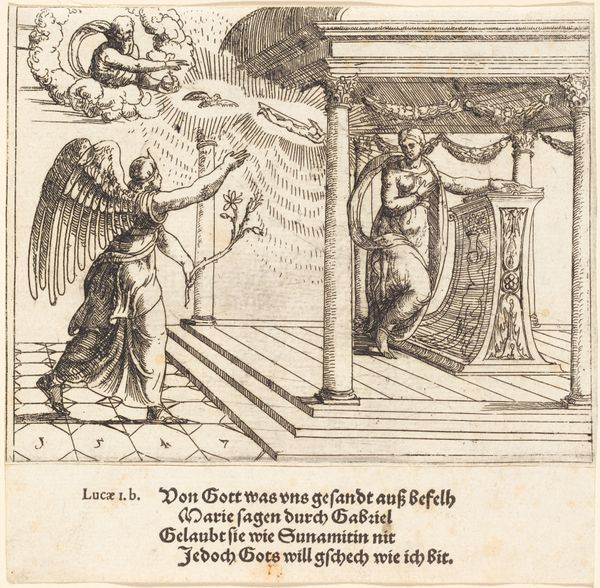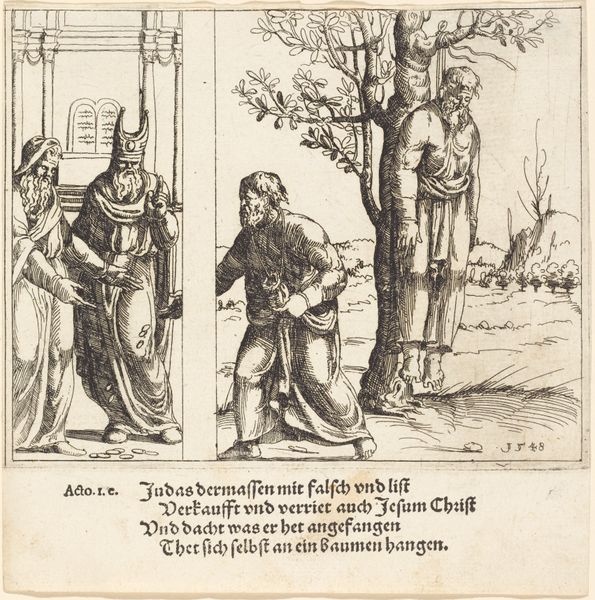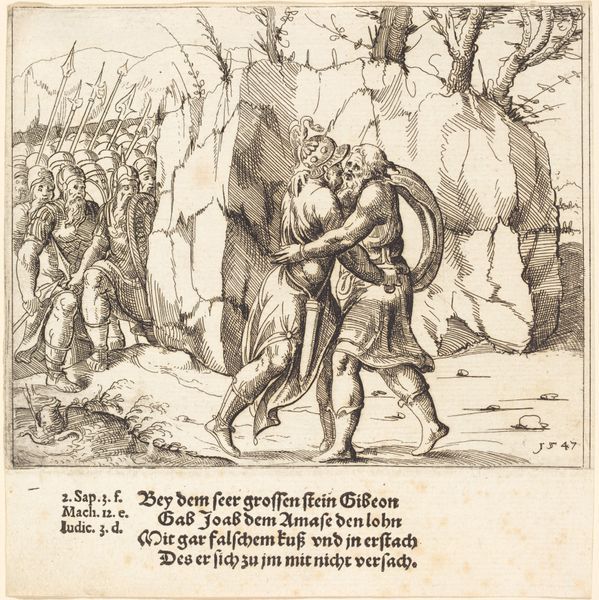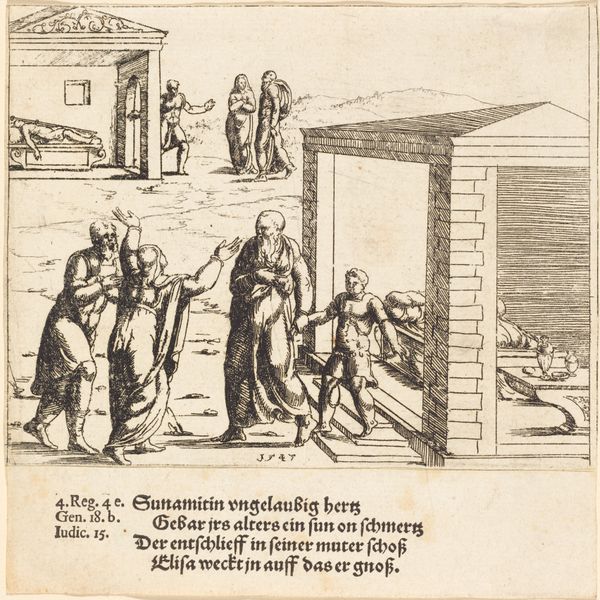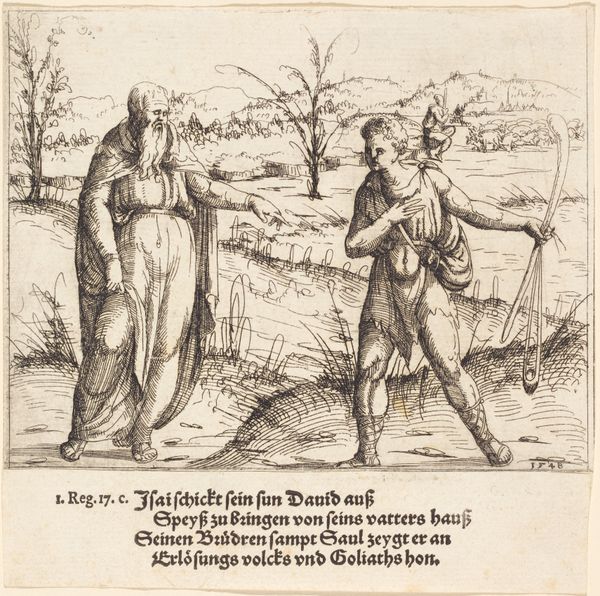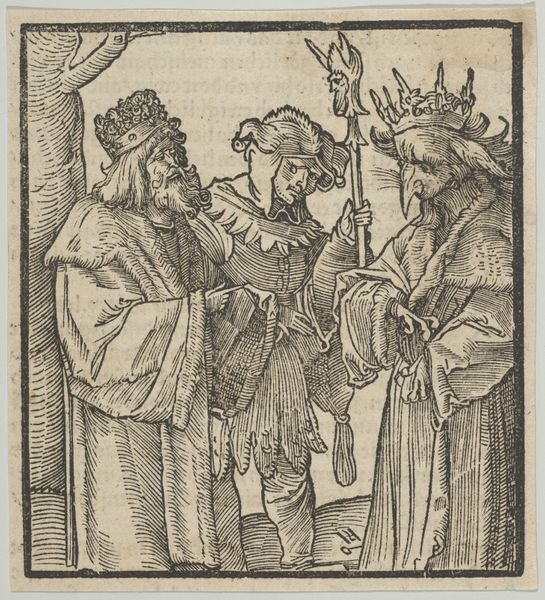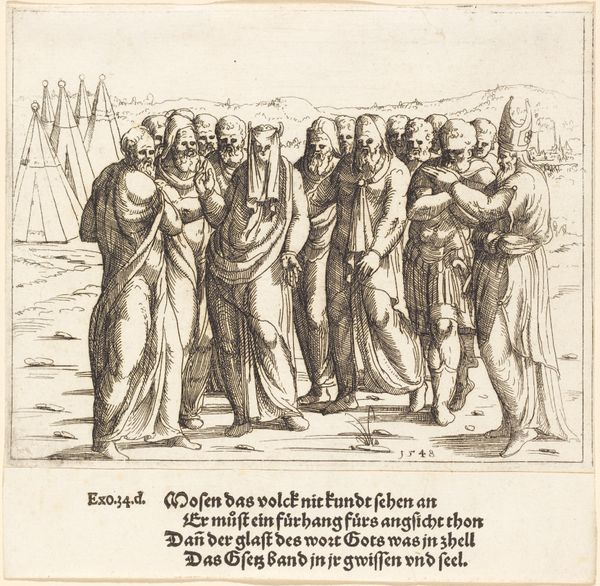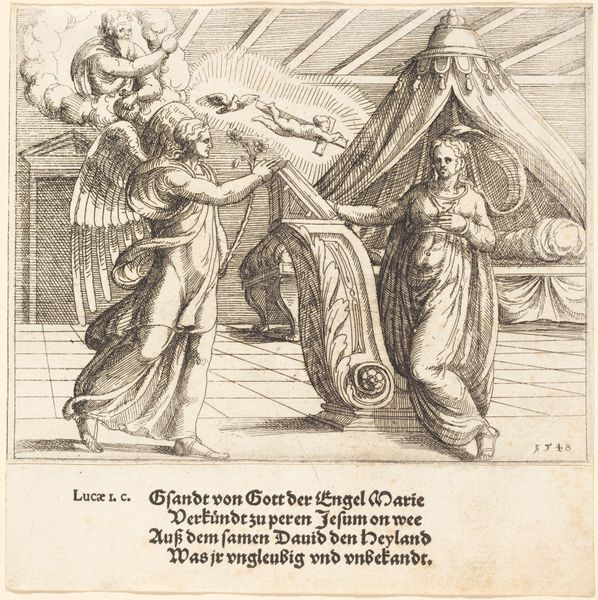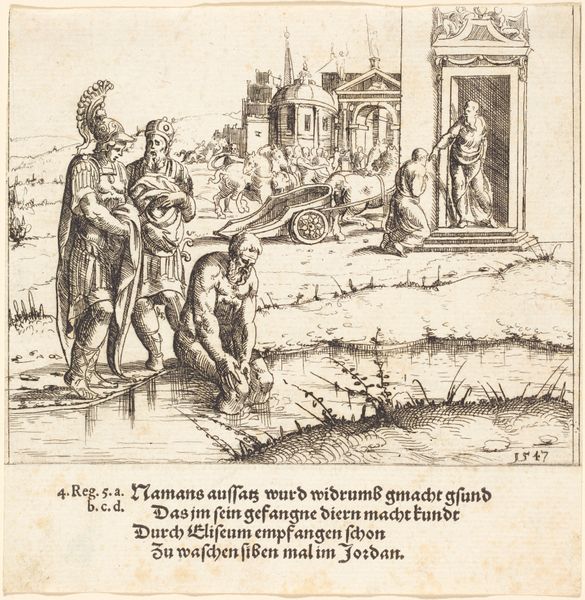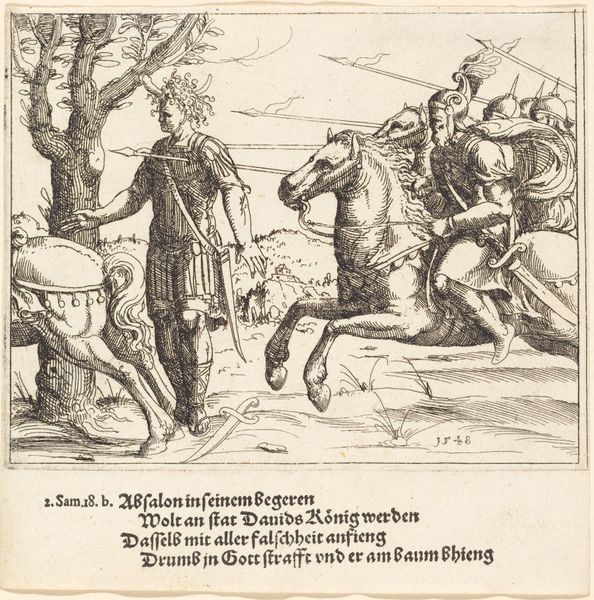
#
narrative-art
# print
#
landscape
#
figuration
#
history-painting
#
northern-renaissance
Copyright: National Gallery of Art: CC0 1.0
This is Augustin Hirschvogel’s take on 'The Temptation of Christ,' made in 1548. He used etching, a printmaking process. In etching, a metal plate is coated with a waxy, acid-resistant substance called a "ground." The artist then draws through this ground with a needle, exposing the metal. When the plate is immersed in acid, the exposed lines are bitten into, creating grooves. Ink is then applied to the plate, filling these grooves, and the surface is wiped clean. Finally, the plate is pressed onto paper, transferring the ink and creating the image. The precise lines achieved through etching allow for an incredible level of detail. This was labor-intensive, requiring a careful touch and deep knowledge of the materials. In Hirschvogel’s time, printmaking was critical for circulating images. It made art accessible to a wider audience, and also allowed artists to generate income by selling copies of their work. This was at the beginning of a capitalist art market, and artists were becoming entrepreneurs. In this light, the 'Temptation' takes on new meaning, as an example of artistry navigating the changing landscape of faith and commerce.
Comments
No comments
Be the first to comment and join the conversation on the ultimate creative platform.
